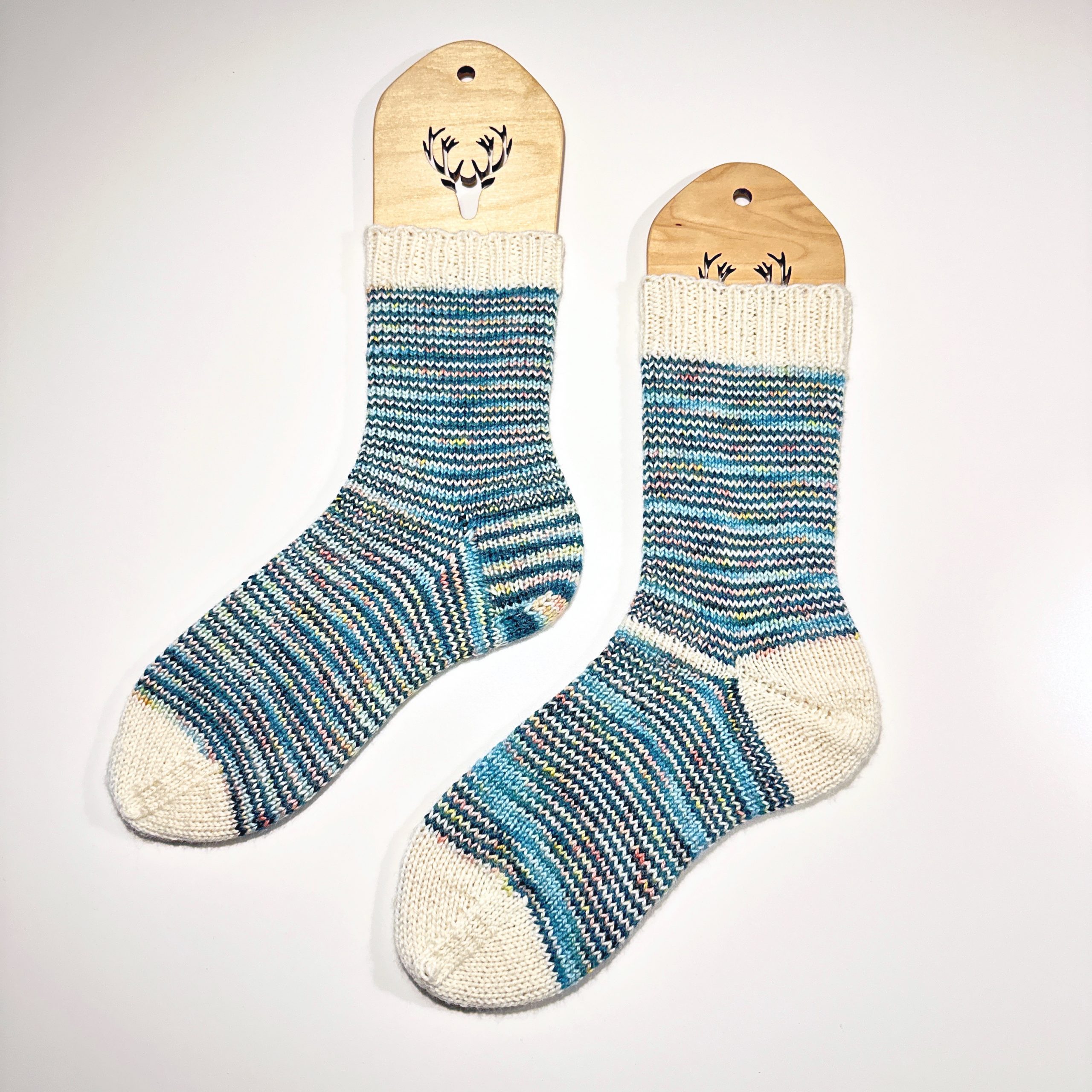Hand-dyed yarn: Stripes and Pooling
🇬🇧 For me, hand-dyed skeins of yarns are fascinating. Each skein is unique because the dyeing is never perfectly reproducible. That’s what makes the yarn so special when you look at it and work with it. But it can also happen that you see a skein of yarn and think it’s just great, but when you actually start knitting with it, it somehow produces completely different results than you thought it would. This can be due to the color distribution.
I distinguish between three categories when dyeing: (Semi)-solid or lightly shaded colorings, speckled colorings and multicolored (variegated) colorings. While solid and shaded colorings usually use only one main color and its shades, speckled colorings have speckles in harmonizing or contrasting colors in addition to the main color. Variegated colorings consist of several colors and possibly speckles.
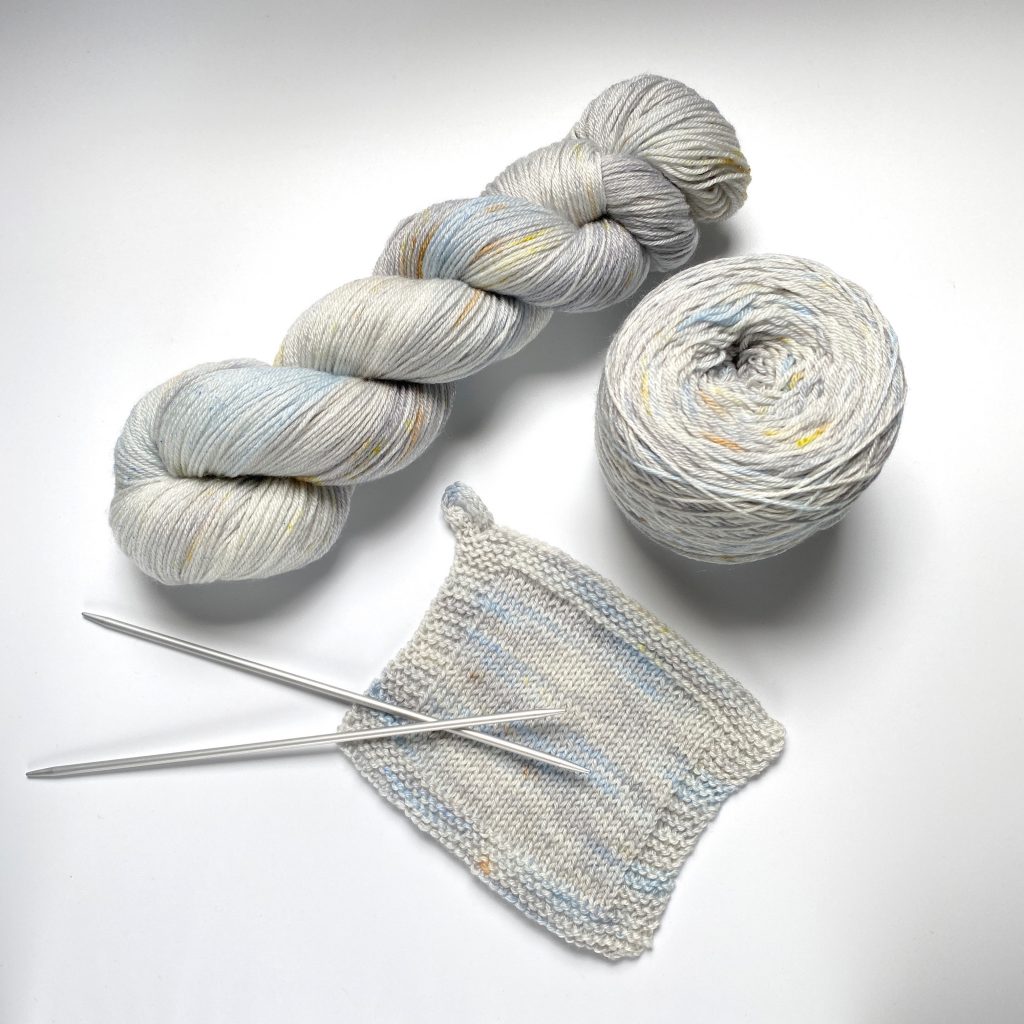

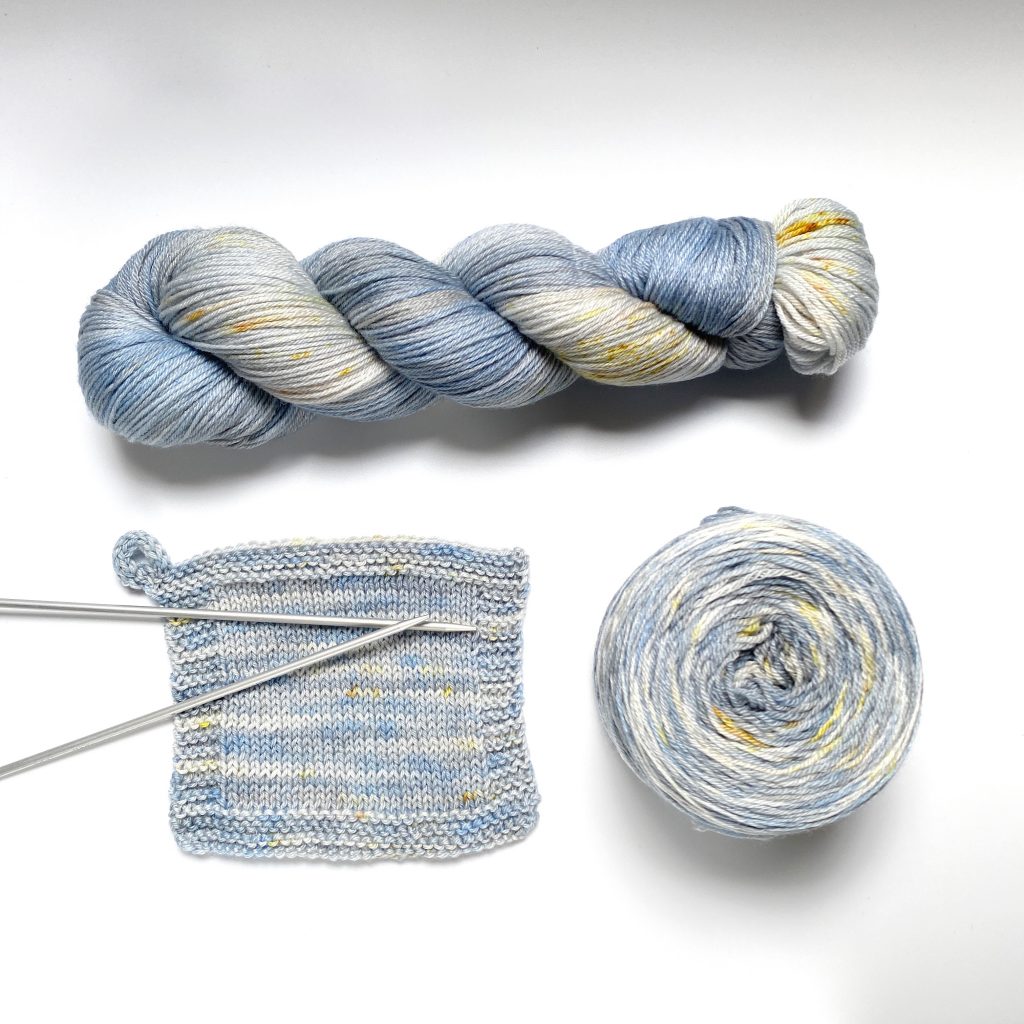
Later, when knitting (or crocheting), the different colorings really show themselves. While a solid or shaded yarn varies only a little in the shades, intensely speckled and multicolored yarns can create interesting effects. Depending on the exact distribution of the color, stitch size, and row length, stripes or pooling of color areas can be created. The photos already show how more clearly defined colors in the yarn can lead to slight stripes in a knitted swatch. Generally speaking, the more clearly defined the color areas are in the yarn dyeing, the clearer the color areas or stripes will be in the knitted piece.

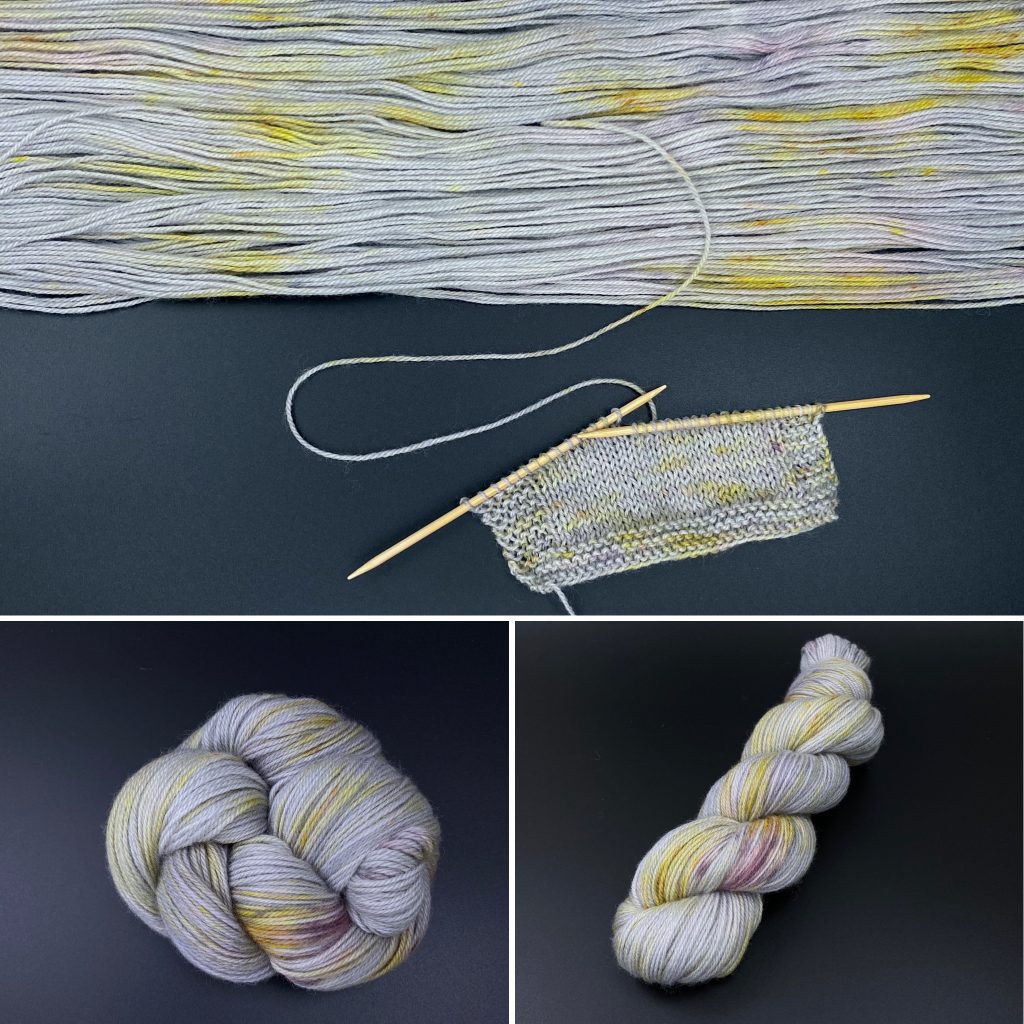

In the next section, I’d like to go into more detail about stripes and pooling, both producing very nice effects.
The picture on the left shows two socks. Both have been knitted with the same yarn. The left sock was knitted with 48 stitches per round and a traditional heel in the same yarn. The right sock was knitted with 52 stitches and a boomerang heel from contrasting yarn. As you can see, especially in the foot area of both socks the difference of 4 stitches already changes the color pattern. While the left sock has small stripes of light and dark areas, in the right sock the transitions between the light and dark areas of the yarn are always in exactly the same place. This creates the clearly visible, thicker light blue stripes. If you change the number of stitches further, also the color areas can change such, that light and dark colors always meet at the same locations. This is called pooling. The upper part of the heel of the left sock is knitted in rows rather than rounds. The number of stitches is thus halved. The result are stripes that are twice as wide as the stripes of the rest of the sock. Here it is a matter of taste whether you like this or not. I didn’t like it so much for the heel, so I decided to knit the sock again and use a contrasting yarn for the heel.

I took the time and made a shawl out of a sock yarn that would have created great stripes in a sock (pictured left). The shawl is knit sideways from the narrow point to the middle to the other narrow point. So it starts with few stitches and then gets wider and wider. This gave me the opportunity to observe exactly how the color areas fall together depending on the width of the rows. As you can see in the picture, there are both large areas of color and small stripes in the shawl. The shawl is one of my favorite pieces!
To me, the important thing is to think a bit about the effects the coloring of the yarn will have in combination with the knitted piece before starting, so that you can get the best out of the yarn and not end up disappointed because the yarn doesn’t work as expected. For example, I personally wouldn’t use highly variegated yarn for a knitting project with a lot of texture or FairIsle because the color variations will make the texture difficult to see.
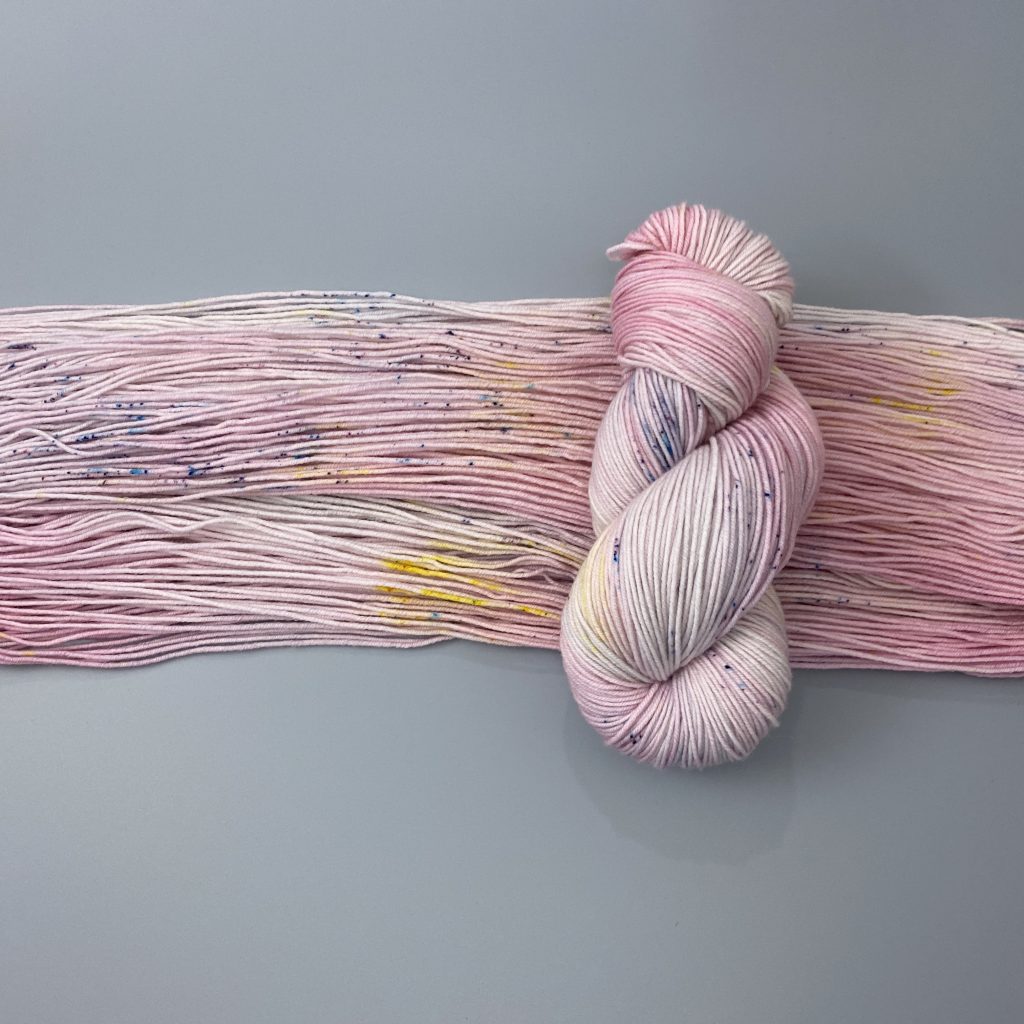
🇩🇪 Für mich geht von Hand gefärbte Stränge Garne eine Faszination aus. Jeder Strang is einzigartig, weil die Färbungen niemals perfekt reproduzierbar sind. Das macht das Garn beim Anschauen und Verarbeiten so besonders. Es kann aber auch vorkommen, dass man ein Garn ansieht und toll findet, es aber beim Stricken irgendwie ganz andere Ergebnisse erzeugt, als man sich gedacht hatte. Das kann an der Farbverteilung liegen.
Ich unterscheide beim Färben drei Kategorien: (Semi)-Solide bzw. leicht schattierte Färbungen, gesprenkelte Färbungen und mehrfarbige (bunte) Färbungen. Während bei den soliden und schattierten Färbungen meist nur eine Hauptfarbe und deren Schattierungen eingesetzt werden, haben gesprenkelte Färbungen ergänzend zur Hauptfarbe Sprenkel in harmonierenden oder kontrastierenden Farben. Bunte Färbungen bestehen aus mehreren Farben und ggf. Sprenkel.



Beim Stricken (oder Häkeln) zeigen sich dann die verschiedenen Färbungen richtig. Während das einfarbige oder schattierte Garn nur ein wenig in den Farbnuancen variiert, können intensiv gesprenkelte und mehrfarbige Garne interessante Effekte hervorrufen. Abhängig von der genauen Verteilung der Farbe, Maschenweite und Reihenlänge können Streifen oder Ansammlungen (sog. Pooling) von Farbflächen entstehen. In den Fotos sieht man bereits, wie klarer abgegrenzte Farben zu leichten Streifen führen kann. Generell kann man sagen, je klarer die Farbflächen in der Garnfärbung abgegrenzt sind, desto klarer werden auch Farbflächen bzw. Streifen im Strickstück entstehen.



Im Folgenden möchte ich genauer auf Streifen und Pooling eingehen, die beide sehr schöne Effekte hervorrufen.
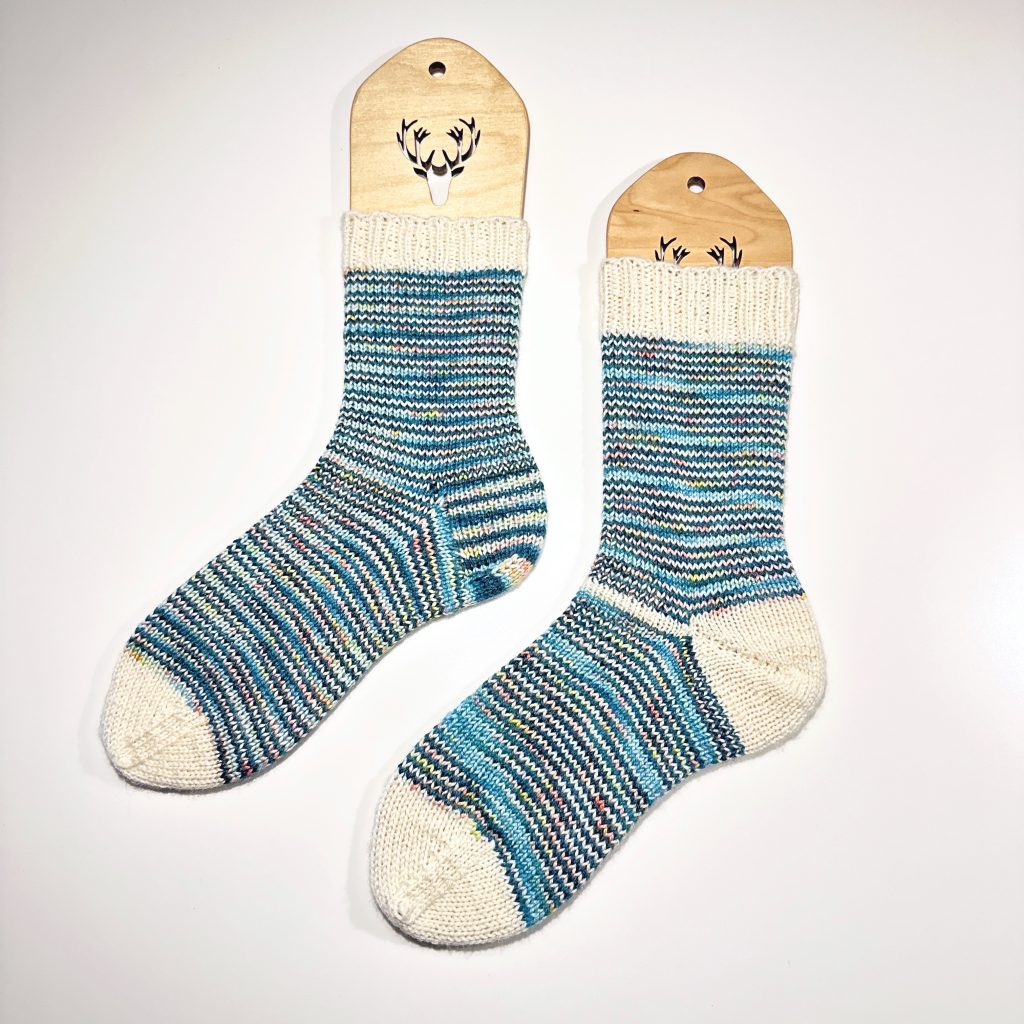
Im Bild links sieht man zwei Socken. Beide sind mit dem gleichen Garn gestrickt worden. Die linke Socke wurde mit 48 Maschen pro Runde und Käppchenferse im gleichen Garn gestrickt. Die rechte Socke wurde mit 52 Maschen und mit farblich abgesetzter Boomerangferse gestrickt. Wie man besonders im Fußbereich der beiden Socken sehen kann, verändert bereits der Unterschied von 4 Maschen das Farbbild. Während die linke Socke kleine Ringel aus hellen und dunklen Bereichen hat, liegen bei der rechten Socke die Übergänge zwischen den hellen und dunklen Bereichen des Garns immer genau an der gleichen Stelle. Daher entstehen hier die klar sichtbaren, dickeren hellblauen Streifen. Verändert man die Maschenanzahl weiter, können sich die Farbbereiche weiter verändern, so dass helle und dunkle Farben immer wieder an den gleichen Stellen zusammentreffen. Das nennt man dann Pooling (= Ansammlung). Die Ferse der linken Socke wird im oberen Bereich in Reihen und nicht in Runden gestrickt. Die Maschenzahl halbiert sich somit. Das Resultat sind Streifen, die doppelt so breit sind, wie die der restlichen Socke. Hier ist es nun Geschmacksache, ob man das mag oder nicht. Ich mochte es an der Ferse nicht so sehr und habe mich daher entschieden, die Socke nochmal zu stricken und die Ferse farblich abzusetzen.

Ich habe mir den Spaß erlaubt und aus einem Sockengarn, welches in einer Socke tolle Streifen erzeugt hätte, in einem Tuch zu verarbeiten (Bild links). Das Tuch ist seitlich von der schmalen Spitze über die Mitte zur anderen schmalen Spitze gestrickt. Es fängt also mit wenig Maschen an und wird dann immer breiter. Damit hatte ich die Gelegenheit, genau zu beobachten, wie die Farbflächen abhängig von der Reihenbreite zusammenfallen. Wie man im Bild sehen kann, sind sowohl große Farbflächen als auch kleine Streifen im Tuch. Das Tuch ist eines meiner Lieblingsstücke!
Wichtig ist, dass man sich vor dem Stricken ein paar Gedanken zu den Auswirkungen der Garnfärbung in Kombination mit dem Strickstück machen sollte, damit man das beste aus dem Garn herausholen kann und am Ende nicht enttäuscht ist, weil das Garn nicht wirkt wie erwartet. Ich persönlich würde z.B. stark variierendes Garn nicht für ein Strickprojekt mit viel Textur oder FairIsle verwenden, da die Farbvariationen die Struktur eventuell nur schwer erkennbar machen kann.
🇳🇱 Wordt aan gewerkt.

